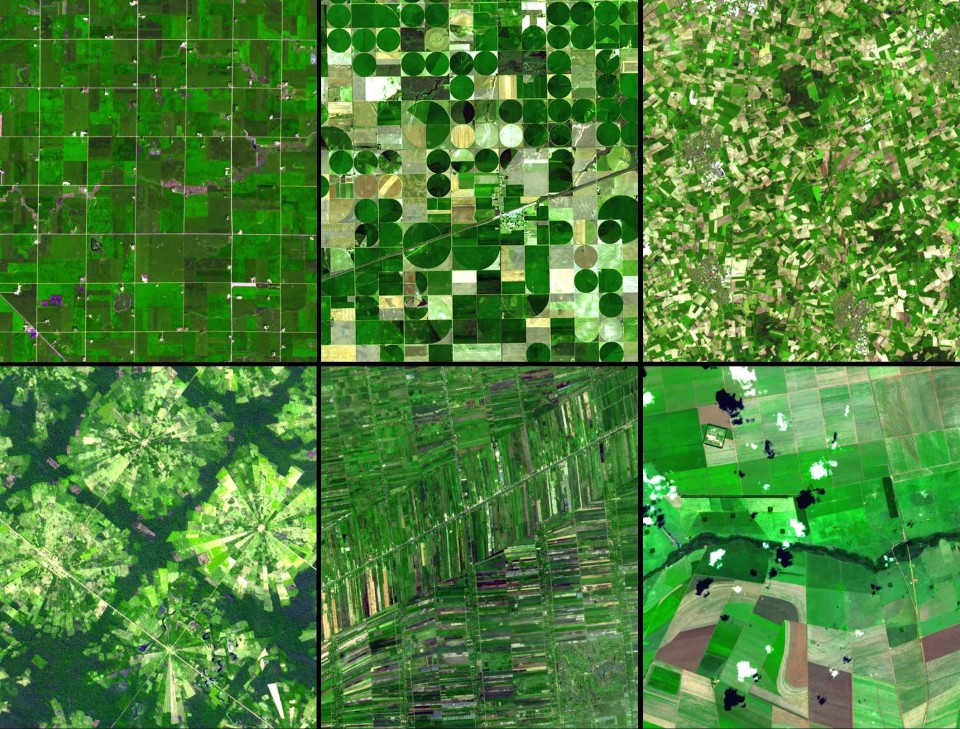Physical History
Development of Agriculture and Civilization
By Mark Ciotola
First published on May 17, 2019. Last updated on January 19, 2021.
Introduction
Important events in the progression of humanity is the development of agriculture and civilizations. Societies involve collective action between individual organisms such as individual humans that tends to increase entropy production by increasing efficiency or accessing otherwise inaccessible useful energy. Civilization tends to further involve centralization and coordination that increases efficiency even further.

Green field (Credit: US govt.)
From Brains to Civilization
- Although brains do not make random decisions, a collection of brains can exhibit nearly random behavior. Recall that even the simplest brains provide a large range of actions in response to environmental factors. Further, the more complex a brain, the greater flexibility it has to vary its decisions from those of other members of its species.
Admittedly, diverse action is not necessarily purely random. Certainly, brains of a particular species will tend to exhibit similar responses to certain types of events, to the extent that brains are an artifact of evolution. This can be thought of as evolutionary “inertia”. Further, an individual brain does not appear to make decisions randomly, but rather it tends to act in particular ways with patterns of reaction. These traits are often called habit and stubbornness.
Nevertheless, despite the particular habits and stubbornness of individual brains, a collection of brains, especially the highly developed brains of humans, act in many different ways. For some purposes, a large of collections of brains produces a roughly random set of reactions. (Although for other purposes, brains make very similar decisions, such as where “swarm logic” applies). Random types of decisions can be modeled statistically, in some ways even thermodynamically. In fact, the random aspects of brain decision-making can be used to give predictability to social models.
- Fast entropy still favors the more rapid degradation for free energy. Although an individual brain can make decisions that are highly unencumbered by the considerations of fast entropy, there will still be the subtle pressure of fast entropy on each deciding brain. Therefore a collection of brains will, everything else being equal, tend to make decisions that are consist with more rapidly degrading energy. Otherwise, the collection of brains may lack endurance, especially when there are other competing collections of brains.
- Civilization tends to act to more rapidly degrade free energy. It forms organization and develops technology. In fact, civilization often replicates biological structures that themselves increase entropy production. Roads and railroad lines are analogous to blood vessels. Telephone and internet lines are analogous to nerves.
- Civilized, more organized groups of people (who degrade free energy more quickly) tend to displace other groups of less civilized, less organized groups of people who degrade free energy less quickly. This there is thermodynamic pressure to become more and more civilized. The term civilization refers to developing a complex, organized, technologically capable society rather than polite “civilized” behavior. For example, having the complex social structure required to build a nuclear weapon would be considered being civilized here, while merely wiping ones mouth with a napkin after dinner would not, although those traits often do go hand in hand.
Summary
- Civilizations form that consume energy even more quickly.
- Irrigation allows more areas to be covered by plants. Mining allows depletion of energy trapped in fossil fuel biomass. Cities are a complex structure that allows greater concentrations of energy use.
Civilization As An Even Faster Path
- Civilization allows for coordinated behavior that allows a society to produce entropy even more quickly.
- The e th Law can be used as the foundation for a unified social science that can be used to describe any society, whether on Earth or elsewhere.

Agriculture patterns (credit: NASA)
« Smarter Intelligence | COURSE | Fast Entropy and the eth law »